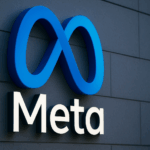The rapid acceleration of artificial intelligence adoption is causing a stir in the corporate world, with top U.S. executives candidly expressing the potential repercussions on white-collar jobs. High-ranking leaders from Ford, JPMorgan Chase, Amazon (NASDAQ:AMZN), and Anthropic are projecting significant reductions in office roles due to the growing integration of AI technologies. While these statements reflect a marked departure from previous corporate communications, they highlight a pressing concern: the real-world impact on employment. As discussions around automation intensify, some companies are already making strategic moves to adapt, assessing which departments might face cuts or shifts in workforce dynamics.
Over recent years, there has been an evolving narrative around AI’s influence on the job market. Historically, companies have treaded carefully, focusing on the potential for automation to enhance productivity rather than displace jobs. However, the present discourse is more candid, with executives now acknowledging the tangible threat to employment. Some firms, like Shopify and Fiverr, have even initiated hiring freezes, highlighting AI’s potential for reshaping operational norms. This new transparency marks a significant shift in communicating AI’s implications to both employees and the public.
How Are Companies Responding to AI’s Rise?
Responses vary across industries, with some organizations taking aggressive steps to integrate AI. Ford’s CEO, Jim Farley, has made bold predictions about AI’s impact on the workforce, emphasizing its potential to replace half of the U.S.’s white-collar workers. Similarly, JPMorgan’s Marianne Lake has informed investors about a 10% reduction in operations staff as AI tools become increasingly prevalent. Such declarations underline a broader acceptance of AI’s far-reaching capabilities and its ensuing consequences.
Is the Fear of Job Loss Overstated?
On the other hand, some industry experts caution against overestimating AI’s capabilities to usurp jobs. OpenAI’s COO, Brad Lightcap, believes that fears surrounding mass entry-level job losses may be exaggerated. Currently, there is minimal evidence supporting widespread job displacement, though the anxiety remains palpable among workers. A recent report indicates 54% of U.S. employees perceive generative AI as a considerable threat to job security, especially those well-versed in the technology.
While the concerns are valid, AI research suggests that instead of displacing roles entirely, AI might more commonly augment them. Workers often find AI beneficial in streamlining tasks, thereby increasing efficiency without fully eliminating the need for human oversight. Nevertheless, organizations continue to make notable adjustments with a strengthened focus on AI’s integration into daily operations. Companies like IBM and Moderna have started consolidating positions or even replacing some HR roles with AI-driven tools.
This significant paradigm shift in corporate policy reveals the broader acceptance of AI’s inevitable influence. As more firms acknowledge the technology’s potential, realigning workforce structures becomes a critical strategy. It’s a time of re-evaluation, with businesses scrutinizing which functions can be automated and which require human expertise.
For companies, the challenge lies in balancing AI’s benefits with potential downsides, ensuring employees remain central to future strategies. This delicate balance requires careful consideration of AI’s capabilities and limitations, as well as continued investment in human resources where they offer a distinct edge.
Adaptation to AI-induced changes in the workforce presents both challenges and opportunities. As companies navigate these shifts, understanding how AI might reshape yet also complement job roles is essential. Addressing workers’ concerns about job security and fostering transparency in AI’s implementation will be key to a harmonious transition.










